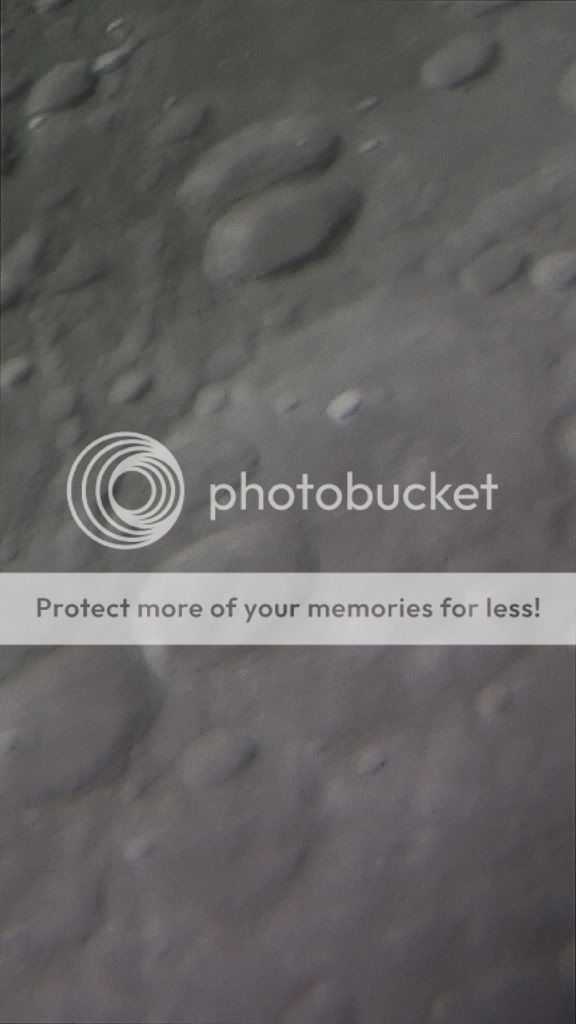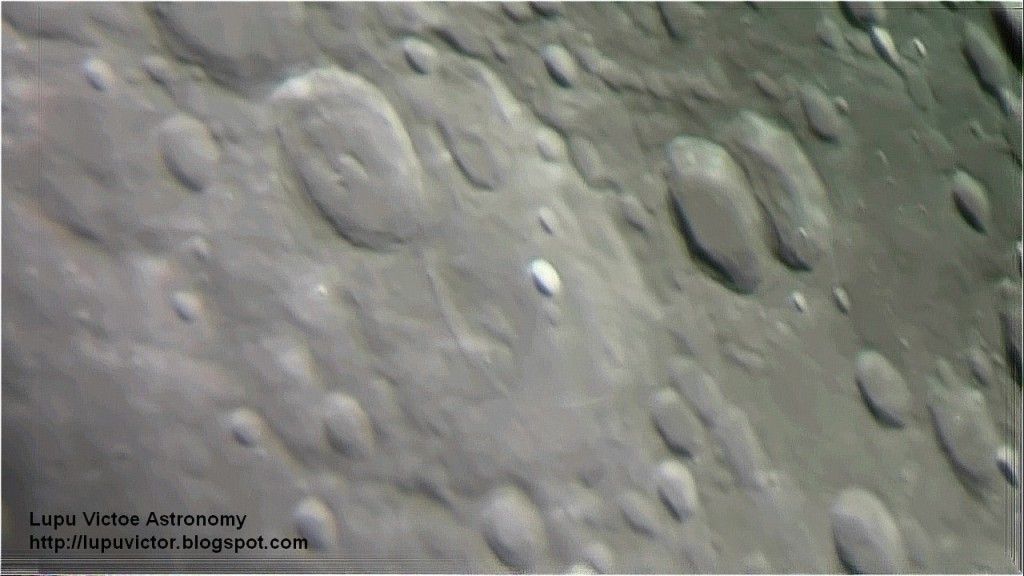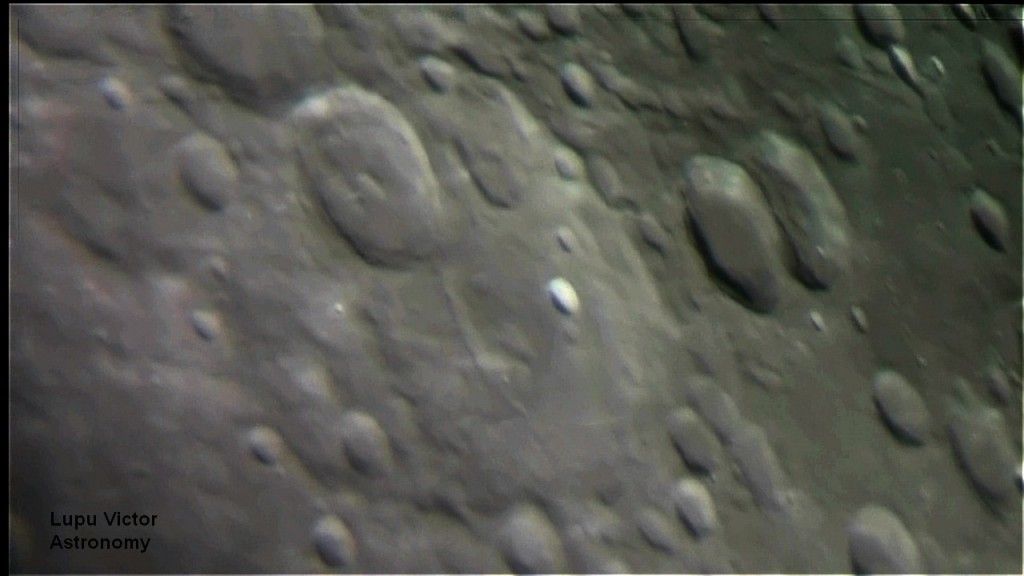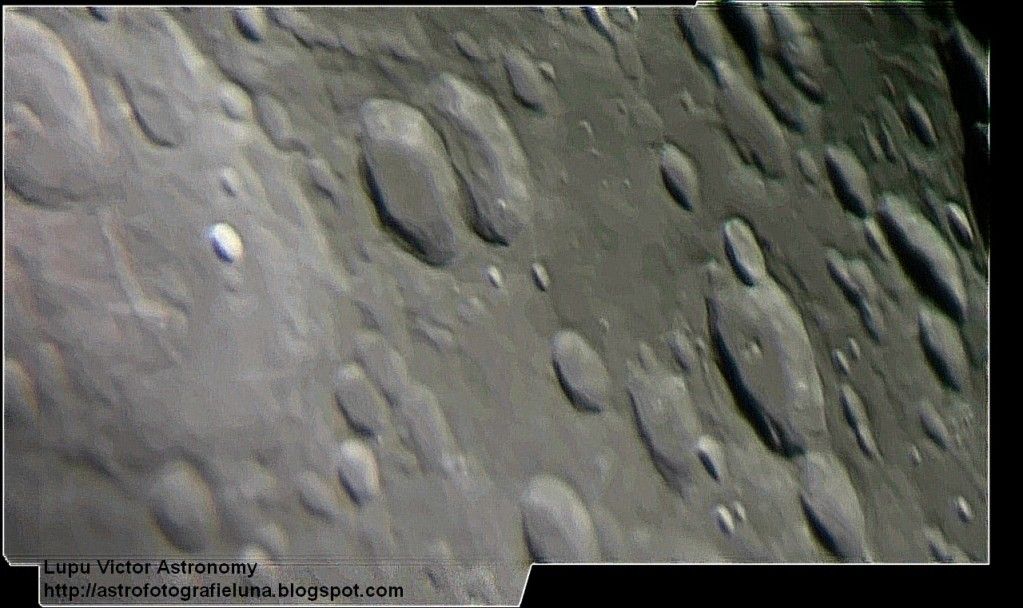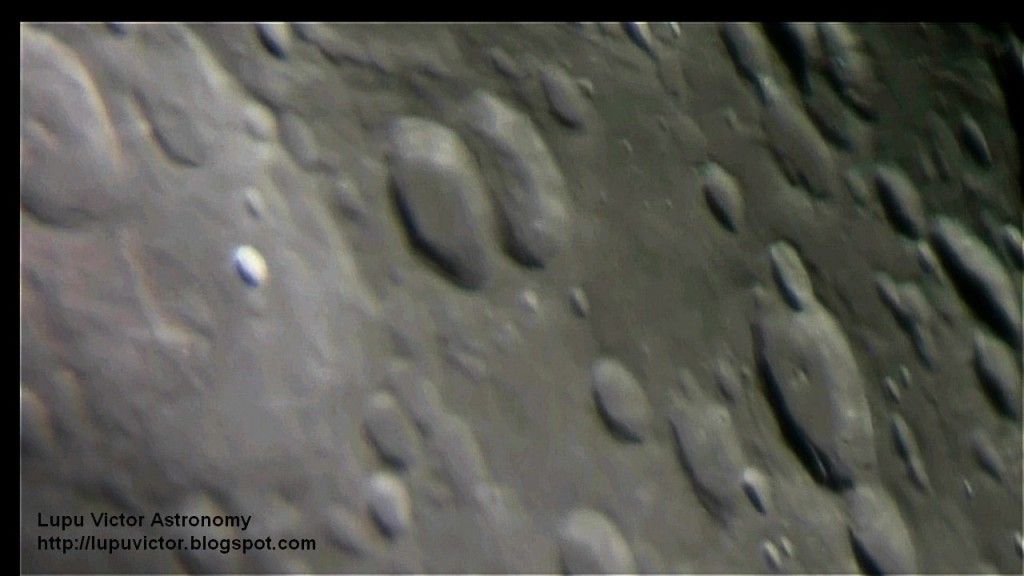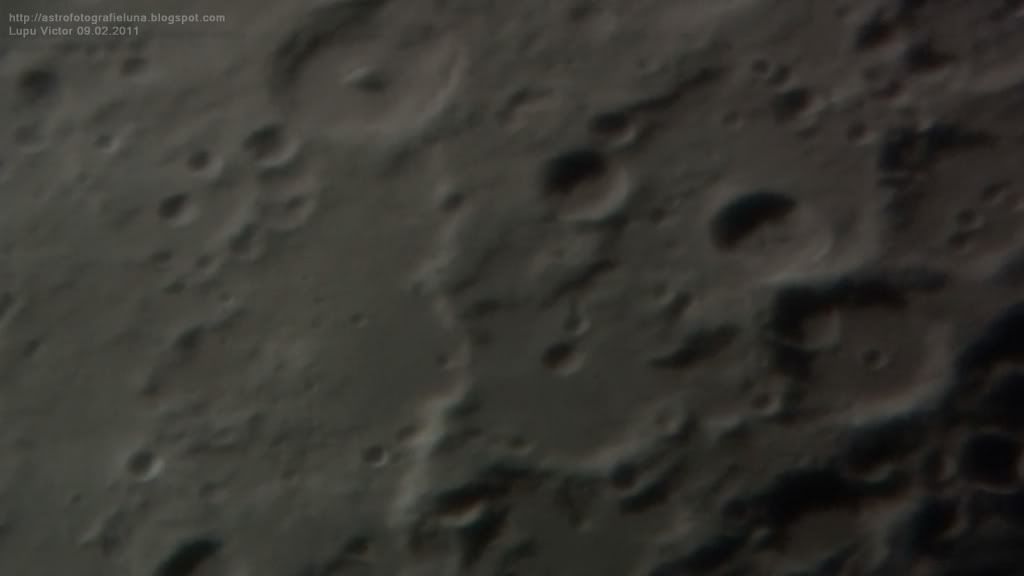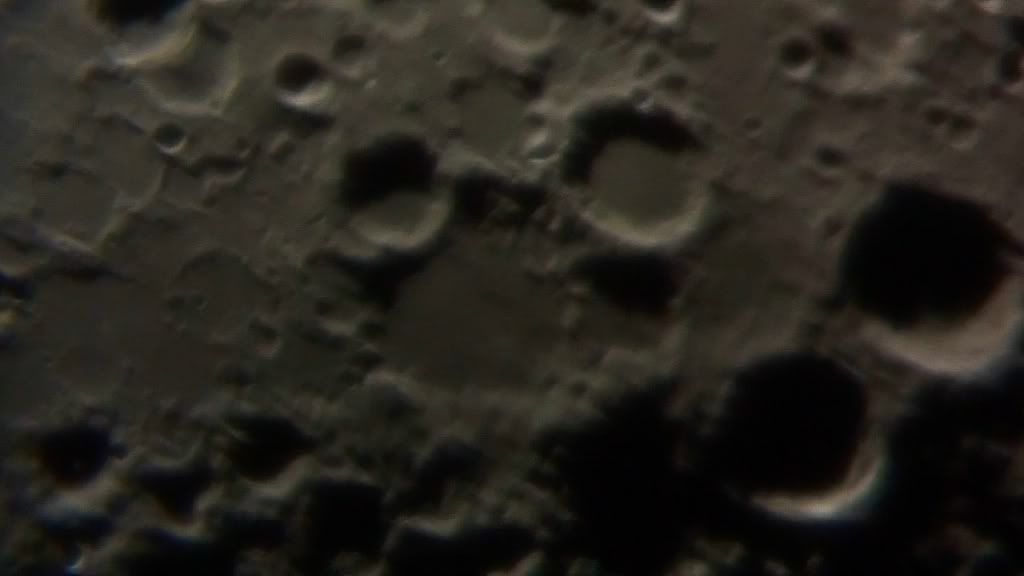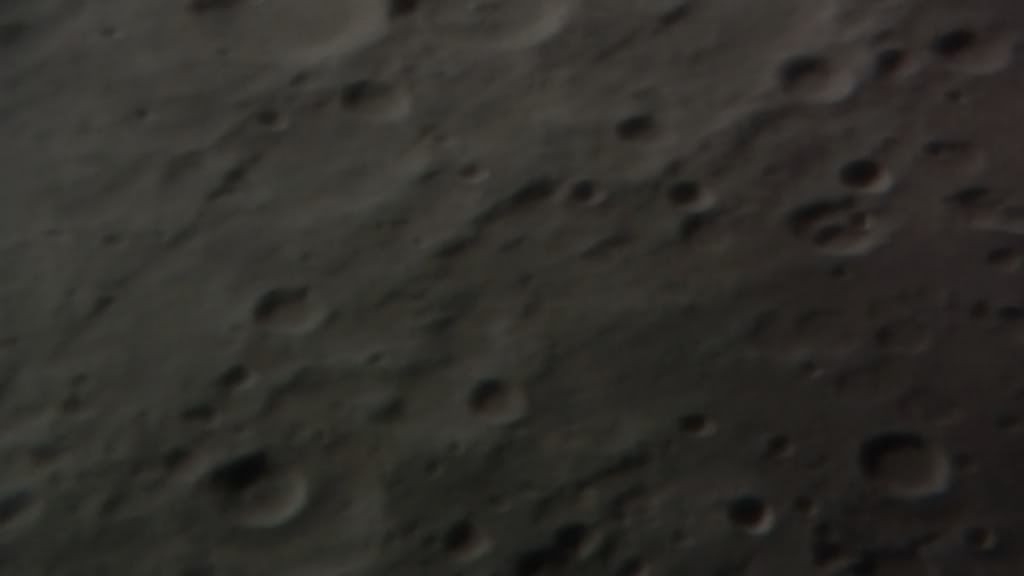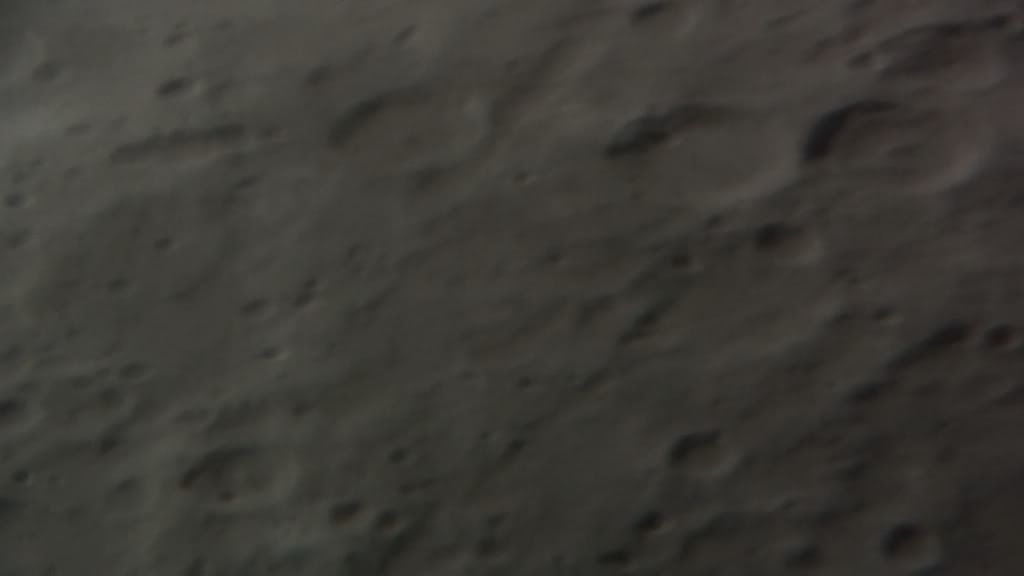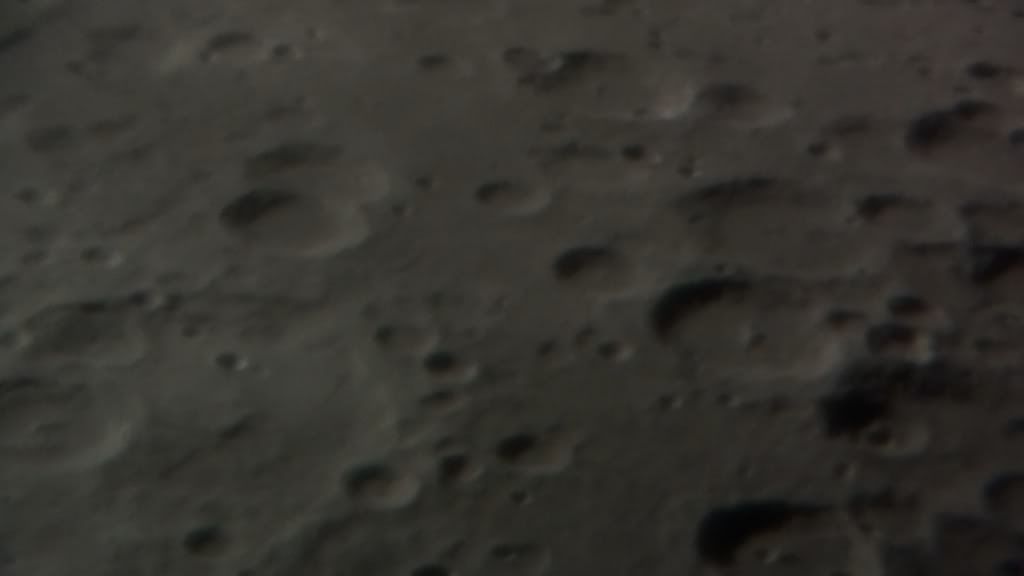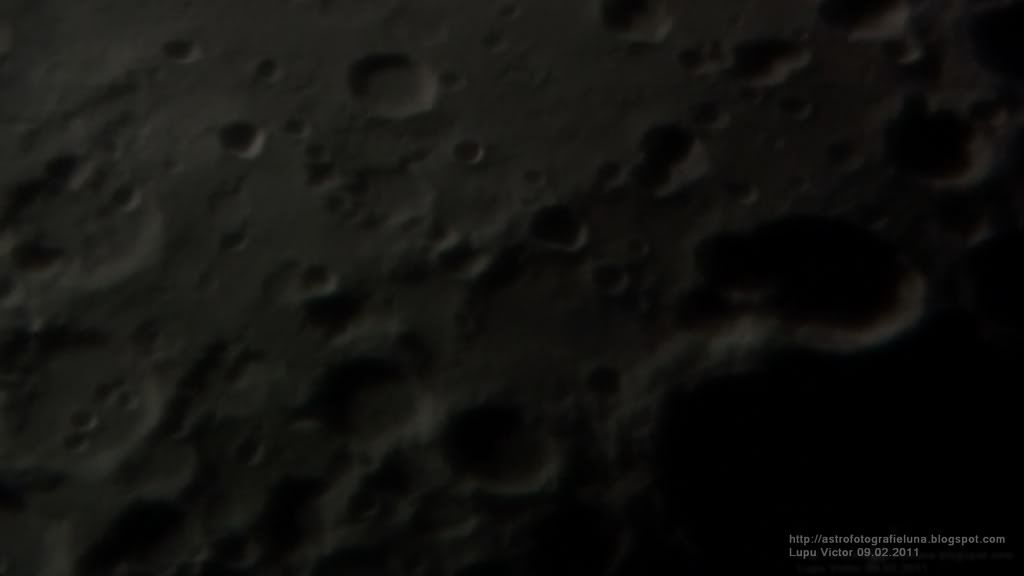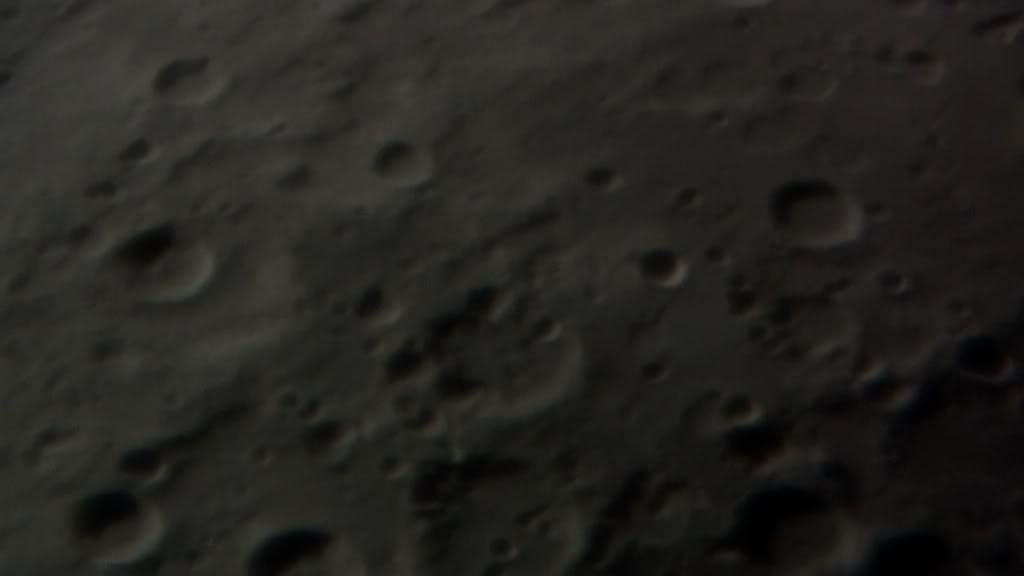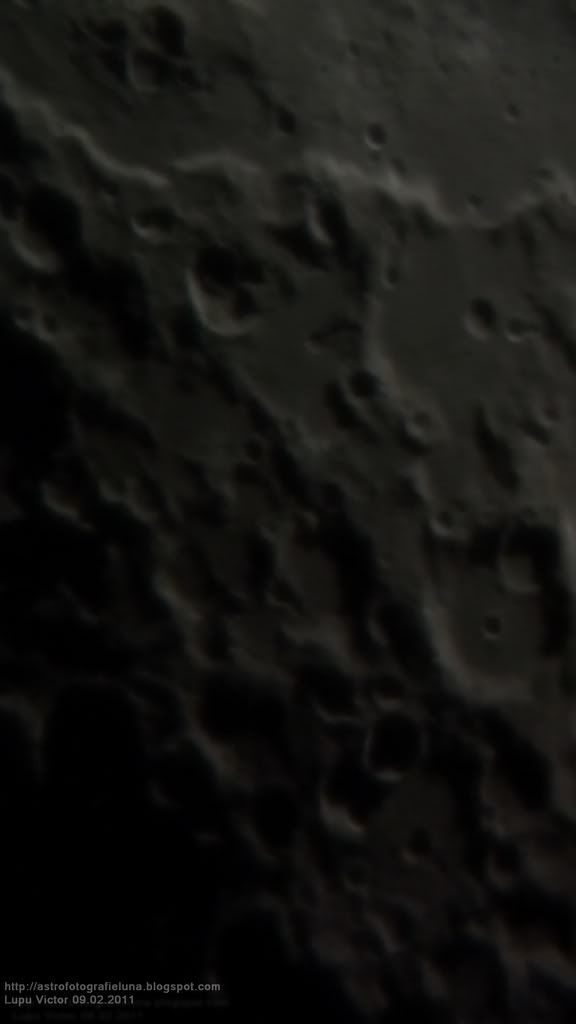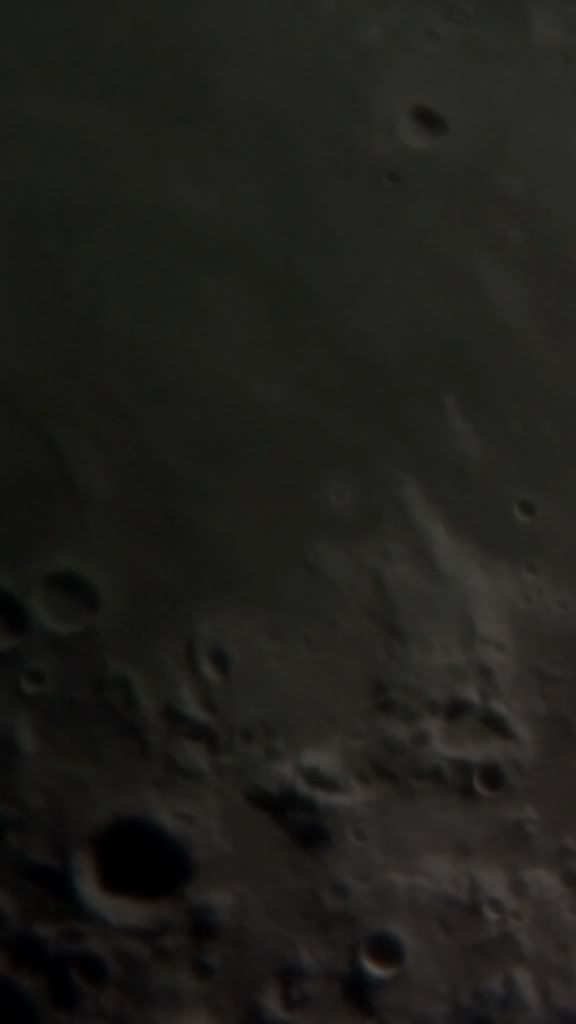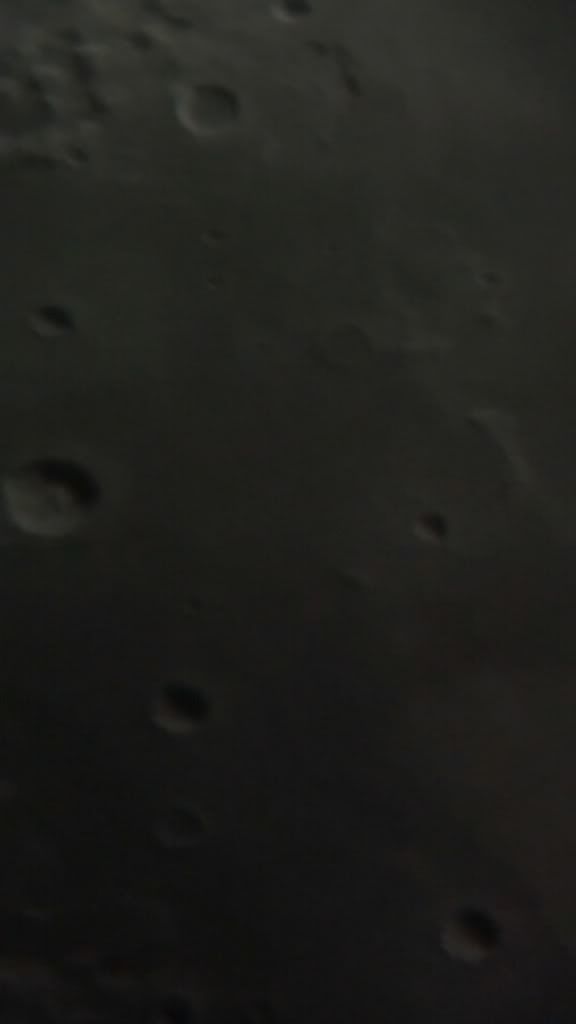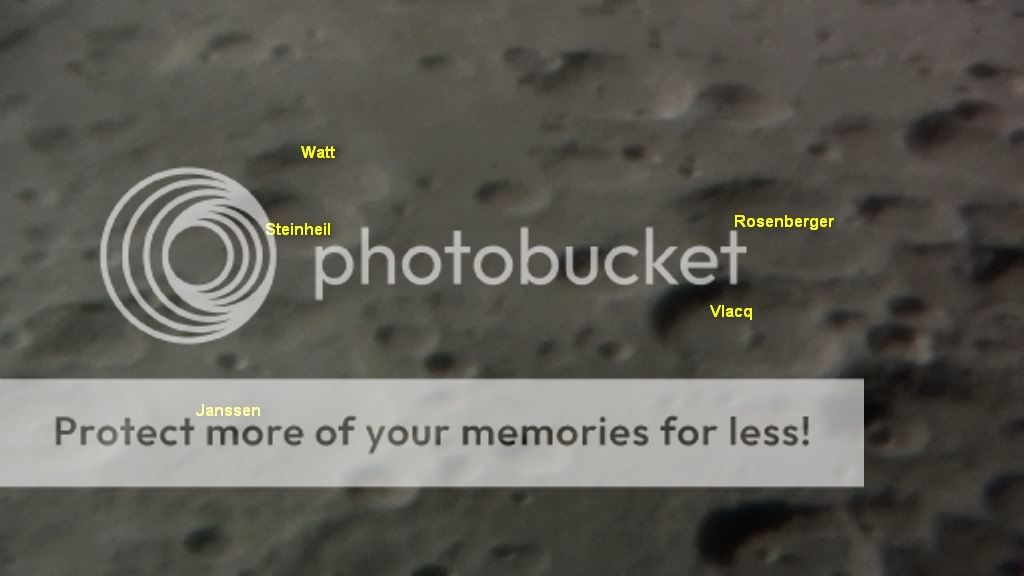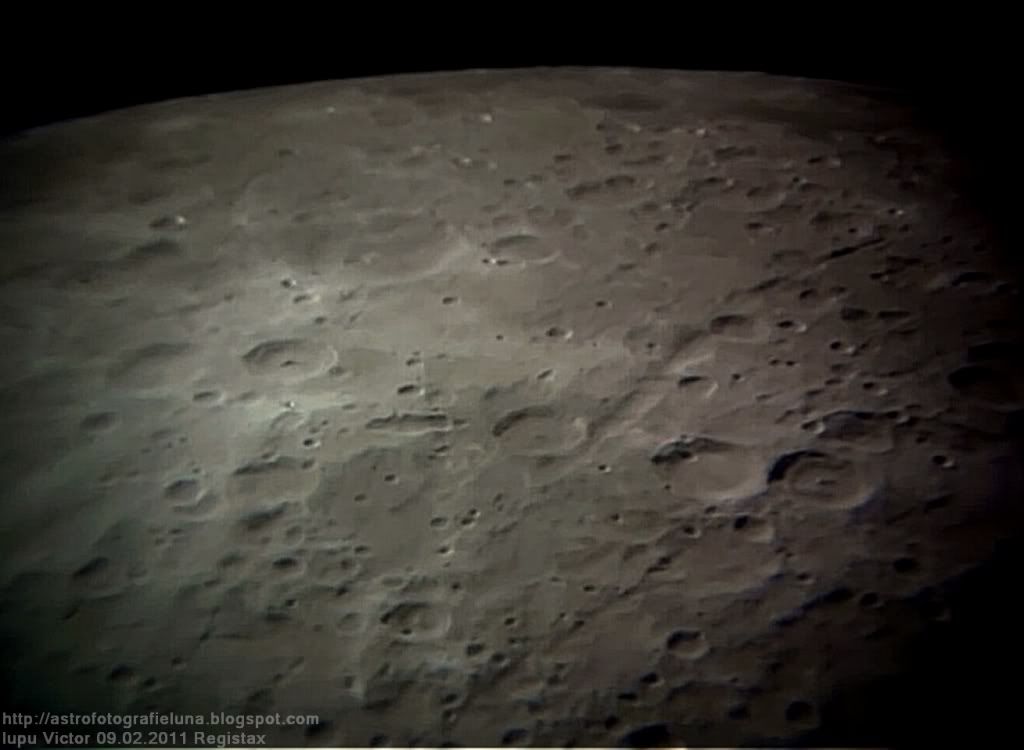The large crater Janssen (190 km) is filmed in this video through 8-inch astronomical telescope on which I attached a HD camcorder. Clarity is one of the best so far of this crater. The image is inverted as seen through the telescope and I left it so, considering that these are south craters. You would not want to see the lunar craters upside down and not allowing you to notice the complexity of the crater in all its splendor.
Note the deep arched line on the floor of Janssen, called Rima Janssen. Do not confuse Janssen crater with a small crater named Jansen with a single "s", which is located southeast of the crater Plinius, on Mare Tranquillitatis.
Note also the margins of this crater, affected by numerous subsequent impacts. Crater Fabricius (78 km), and Fabricius A, are inside of Janssen, and these two forms its eastern edge. Stuck byFabricius, it is old crater, Metius (88 km), because the eastern edge of Fabricius, is superimposed over that of Metius.
In this area there were not organized Apollo missions, probably because the affected land which is dangerous for a safe landing. If you see where Apollo missions took place, you will find that they were held on low depressions, near, or on large basins called "mare".
Janssen, with a diameter of 190 km, and 2.9 km in depth, competes with Clavius, which has a diameter of 225 km, and a depth of 3.5 km, situated also on the southern Moon.
Optics: CelestronC8 "-Newtonian telescope, plossl20mm, 2x Barlow
Mount: CG5 (EQ5) motorized
Device: Sony CX-130
Video mode: Full HD progressive 1920x1080
Filter: no
Date: 31/12/2012
Location: Baia Mare, Romania
Processing and editing: Sony Vegas 10
Note the deep arched line on the floor of Janssen, called Rima Janssen. Do not confuse Janssen crater with a small crater named Jansen with a single "s", which is located southeast of the crater Plinius, on Mare Tranquillitatis.
Note also the margins of this crater, affected by numerous subsequent impacts. Crater Fabricius (78 km), and Fabricius A, are inside of Janssen, and these two forms its eastern edge. Stuck byFabricius, it is old crater, Metius (88 km), because the eastern edge of Fabricius, is superimposed over that of Metius.
In this area there were not organized Apollo missions, probably because the affected land which is dangerous for a safe landing. If you see where Apollo missions took place, you will find that they were held on low depressions, near, or on large basins called "mare".
Janssen, with a diameter of 190 km, and 2.9 km in depth, competes with Clavius, which has a diameter of 225 km, and a depth of 3.5 km, situated also on the southern Moon.
Optics: CelestronC8 "-Newtonian telescope, plossl20mm, 2x Barlow
Mount: CG5 (EQ5) motorized
Device: Sony CX-130
Video mode: Full HD progressive 1920x1080
Filter: no
Date: 31/12/2012
Location: Baia Mare, Romania
Processing and editing: Sony Vegas 10








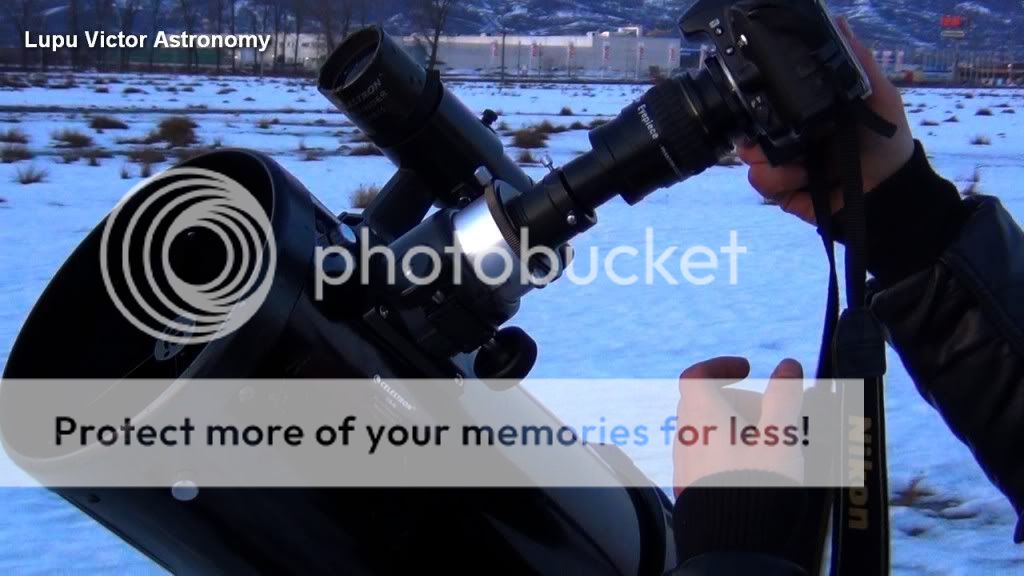

 Friday, April 12, 2013
Friday, April 12, 2013
 Unknown
Unknown









